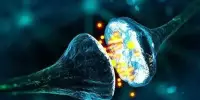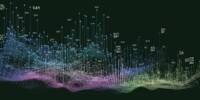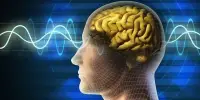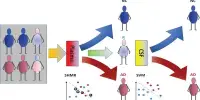The use of brain-wave data and hearing tests to aid in the early identification of autism is an area of ongoing research that has the potential to improve our understanding of this complicated neurodevelopmental condition. According to a new Rutgers-led study, brain-wave data acquired during a routine newborn hearing test could help clinicians detect neurodevelopmental problems such as autism in early infancy.
Researchers discovered that neonates who were later diagnosed with autism spectrum disorder (ASD) displayed significant delays in their brainstem responses to noises. When compared to neurotypical neonates, these babies experienced a 1.76-millisecond lag in a system that operates on a microsecond period.
Because of their restricted availability to sound frequency, these neonates may have problems integrating sound with other sensory streams such as vision, movement, and pain. They may also struggle with social communication and language learning.
With very little effort and cost, we could build a universal screening test to eliminate disparities in infant neurodevelopment and establish normative scales of such a dynamic process. This will allow us to measure individual deviations from these neurotypical ranges as early as possible, when the nervous system is rapidly changing and adapting to its environment and the brain-body circuitry is forming.
Professor Elizabeth Torres
The study, led by Rutgers psychology professor Elizabeth Torres and published in Proceedings of the National Academy of Sciences (PNAS Nexus), suggests a possible approach for developing a universal screening tool for neurodevelopmental disorders, as well as new avenues for targeted personalized treatments.
“With very little effort and cost, we could build a universal screening test to eliminate disparities in infant neurodevelopment and establish normative scales of such a dynamic process,” said Torres, who also serves as the head of the New Jersey Autism Center of Excellence. “This will allow us to measure individual deviations from these neurotypical ranges as early as possible when the nervous system is rapidly changing and adapting to its environment and the brain-body circuitry is forming.”
The researchers investigated changes in waveforms – which are frequently rejected over repetitions – recorded by the Auditory Brainstem Response (ABR) test, which assesses hearing. In this test, therapists play clicks to sleeping neonates while their brain responses are monitored using soft electrodes.

“At birth, the brainstem is already critical for survival functions like breathing, swallowing, and excreting, but also serves as a conduit to the neocortex, subcortical regions, the cerebellum and the spinal cord, where emergent control and coordination of actions give rise to basic building blocks of social behaviors,” said Torres. “As a result of the extreme plasticity of an infant’s brain, the earlier the therapeutic intervention, the more effective the treatment will be.”
The findings may explain disparities in language learning, sensory processing, and motor control as the baby grows and matures, all of which are critical to social interactions and communication. It also explains why early autistic children’s motions are noisy, with repetitive activities, or “stimming,” and unexpected responses to varied sensory stimuli.
The scientists initially normalized the waveforms in the experiment to exclude anatomical variances, such as head circumference, as a cause of unpredictability. They then compared waveforms from infants ultimately diagnosed with autism spectrum disorder to a similar number of undiagnosed babies. Babies who would later be diagnosed with ASD had consistently delayed reactions to clicks and limited access to sound frequencies.
Torres, who directs the Sensory Motor Integration Lab and the New Jersey Autism Center of Excellence, claims that by the time people with ASD are diagnosed in the United States, and even later in other countries, their nervous systems have developed compensatory coping mechanisms and circuitry that differ from neurotypical babies.
Researchers can detect these variations early enough to help the system interpret sensory signals within ranges and timelines that correspond to those of neurotypical persons, allowing information processing and communication between two systems.
“Research shows that the so-called “repetitive, ritualistic actions” are an adaptation of a system operating on different hardware but still attempting to communicate with us,” Torres added. “Our findings force us to reconsider what autism truly is.”
















